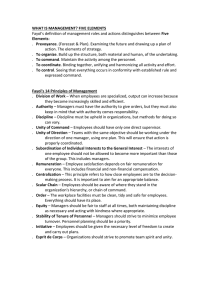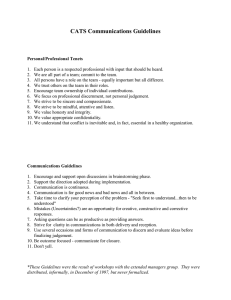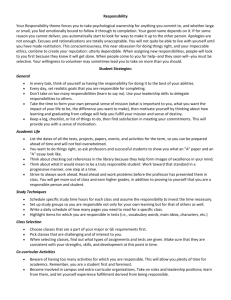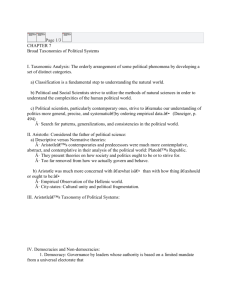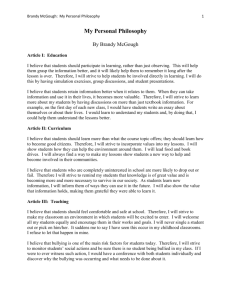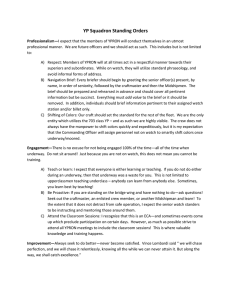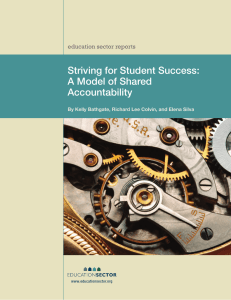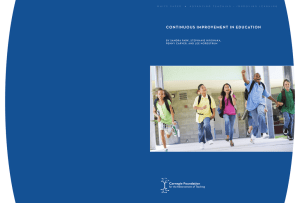Philosophy of Teaching Statement Glenn R. Blauvelt
advertisement
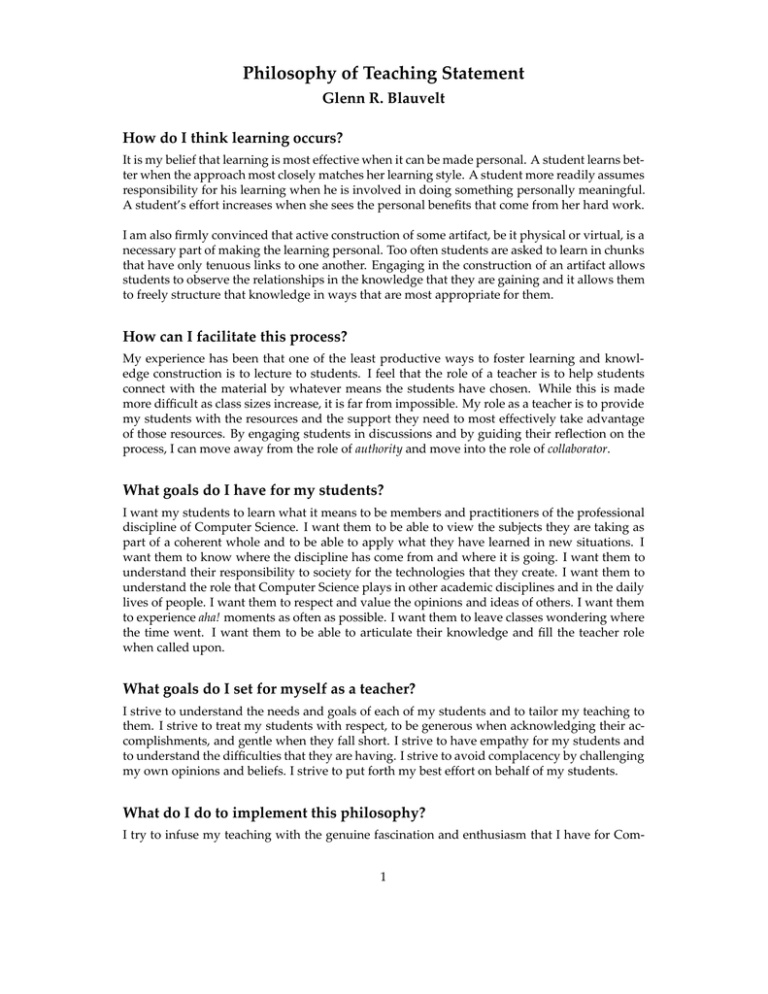
Philosophy of Teaching Statement Glenn R. Blauvelt How do I think learning occurs? It is my belief that learning is most effective when it can be made personal. A student learns better when the approach most closely matches her learning style. A student more readily assumes responsibility for his learning when he is involved in doing something personally meaningful. A student’s effort increases when she sees the personal benefits that come from her hard work. I am also firmly convinced that active construction of some artifact, be it physical or virtual, is a necessary part of making the learning personal. Too often students are asked to learn in chunks that have only tenuous links to one another. Engaging in the construction of an artifact allows students to observe the relationships in the knowledge that they are gaining and it allows them to freely structure that knowledge in ways that are most appropriate for them. How can I facilitate this process? My experience has been that one of the least productive ways to foster learning and knowledge construction is to lecture to students. I feel that the role of a teacher is to help students connect with the material by whatever means the students have chosen. While this is made more difficult as class sizes increase, it is far from impossible. My role as a teacher is to provide my students with the resources and the support they need to most effectively take advantage of those resources. By engaging students in discussions and by guiding their reflection on the process, I can move away from the role of authority and move into the role of collaborator. What goals do I have for my students? I want my students to learn what it means to be members and practitioners of the professional discipline of Computer Science. I want them to be able to view the subjects they are taking as part of a coherent whole and to be able to apply what they have learned in new situations. I want them to know where the discipline has come from and where it is going. I want them to understand their responsibility to society for the technologies that they create. I want them to understand the role that Computer Science plays in other academic disciplines and in the daily lives of people. I want them to respect and value the opinions and ideas of others. I want them to experience aha! moments as often as possible. I want them to leave classes wondering where the time went. I want them to be able to articulate their knowledge and fill the teacher role when called upon. What goals do I set for myself as a teacher? I strive to understand the needs and goals of each of my students and to tailor my teaching to them. I strive to treat my students with respect, to be generous when acknowledging their accomplishments, and gentle when they fall short. I strive to have empathy for my students and to understand the difficulties that they are having. I strive to avoid complacency by challenging my own opinions and beliefs. I strive to put forth my best effort on behalf of my students. What do I do to implement this philosophy? I try to infuse my teaching with the genuine fascination and enthusiasm that I have for Com1 puter Science. I try to keep the atmosphere in my classrooms warm and light, even when the material is difficult. I encourage discussions and the debate of new ideas. I expect students to contribute material from their own experiences. I prefer to use term length projects as a vehicle for knowledge construction and assessment rather than disconnected assignments and exams. I try to lecture only when the amount and type of material that needs to be covered dictates it. I encourage students to come to office hours to discuss difficulties that they might be having, to express concerns or offer suggestions about the material or methods, or just to talk. And most of all, I continue to learn about the discipline, about teaching, and about the students. 2

